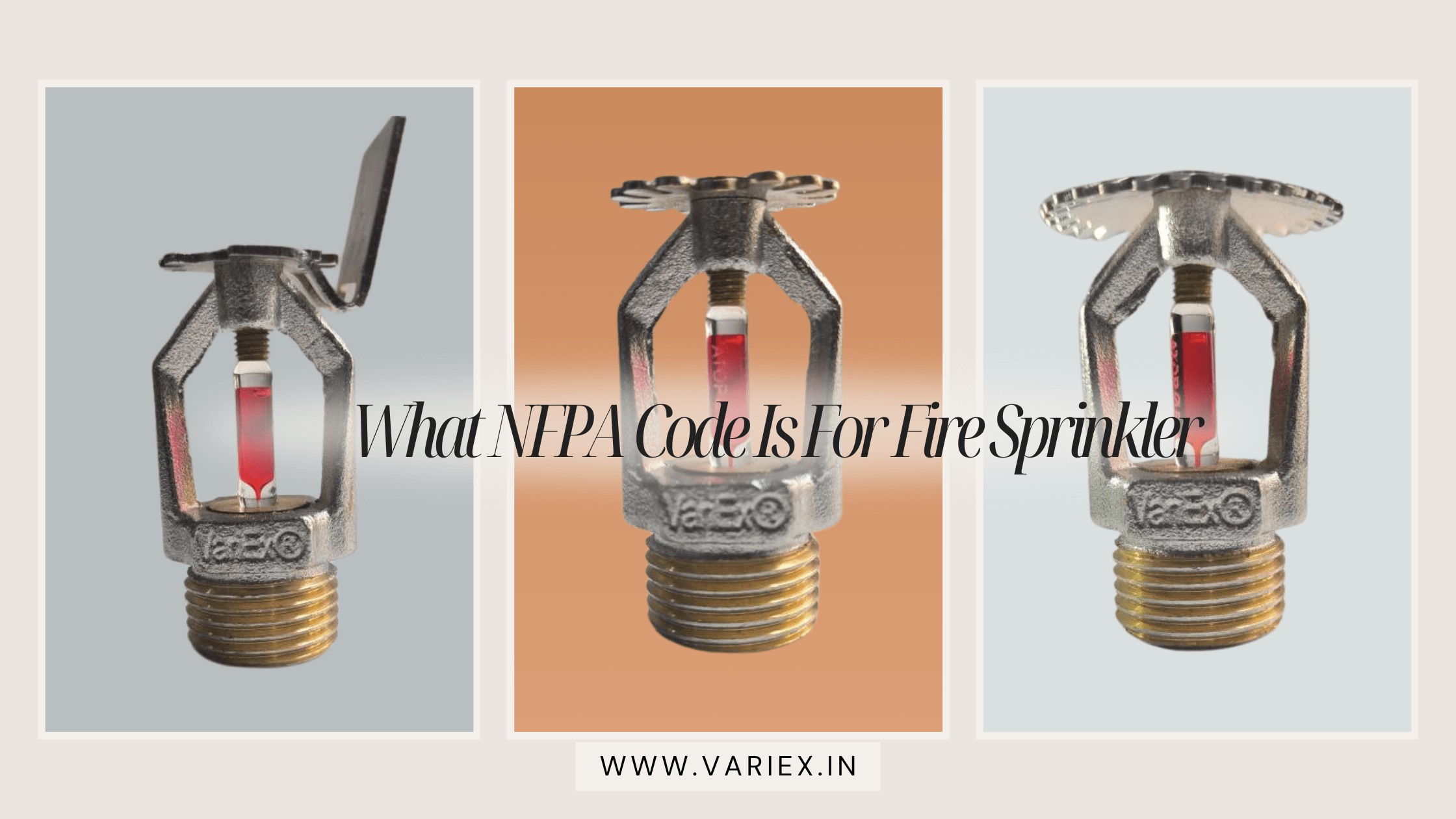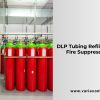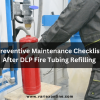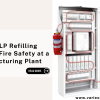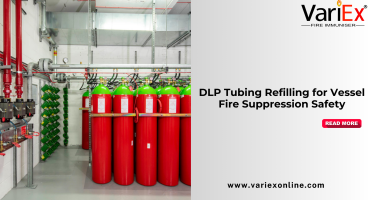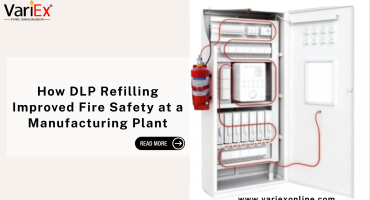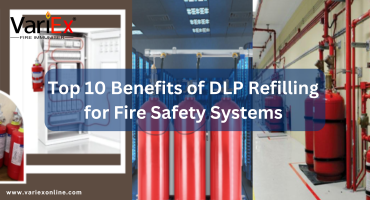![]()
Fire Immuniser
+91-7829629111
Email: info@variex.in
Varistor Technologies Pvt. Ltd.
Block-1, First Floor, Ardente Office One, Hoodi Circle, ITPL Main Road, Bengaluru, Karnataka 560048, IN
What NFPA Code Is For Fire Sprinkler
What NFPA Code Is For Fire Sprinkler
Fire safety is a crucial aspect of building design and operation. Among the various methods employed to protect life and property from fire hazards, fire sprinkler systems stand out as one of the most effective. The National Fire Protection Association (NFPA) has established a series of codes and standards to guide the installation, maintenance, and operation of fire sprinkler systems. This article delves into the NFPA code relevant to fire sprinklers, primarily focusing on NFPA 13, which governs the installation of sprinkler systems.
Overview of the NFPA
The NFPA is a global leader in fire and life safety, providing codes and standards designed to minimize the risk and effects of fire. Founded in 1896, the NFPA develops and publishes codes and standards, conducts research, and provides education to fire safety professionals. These codes are widely adopted across the United States and have significant influence internationally.
Importance of Fire Sprinkler Systems
Fire sprinkler systems are a crucial part of fire protection strategy. They automatically detect and suppress fires, often before firefighters arrive on the scene. Here are several reasons why fire sprinklers are essential:
- Life Safety: Sprinklers significantly reduce the risk of injury or death in the event of a fire.
- Property Protection: They help limit damage to buildings and their contents, leading to lower insurance premiums and reduced recovery costs.
- Compliance: Many jurisdictions require sprinkler systems in new constructions or major renovations, aligning with fire safety regulations.
NFPA 13: Standard for the Installation of Sprinkler Systems
Overview of NFPA 13
NFPA 13 is the primary code that addresses the design and installation of sprinkler systems. It provides guidelines for various types of systems, including:
- Wet Pipe Systems: The most common type, which contains water in the pipes.
- Dry Pipe Systems: Used in areas where freezing temperatures could occur.
- Pre-Action Systems: These systems require a two-step process to activate, often used in areas with sensitive equipment.
- Deluge Systems: Used in high-hazard areas, where all sprinklers open simultaneously.
Key Objectives of NFPA 13
- Standardization: NFPA 13 aims to standardize the installation of sprinkler systems, ensuring consistent performance across different buildings and applications.
- Safety: The code emphasizes protecting life and property by outlining proper system design and installation practices.
- Adaptability: It allows for flexibility to meet specific building designs and usage requirements while maintaining safety standards.
Structure of NFPA 13
NFPA 13 is structured into several chapters, each addressing specific aspects of sprinkler system design and installation. Key sections include:
- General Requirements: This section outlines the scope, purpose, and definitions necessary for understanding the standard.
- Design Criteria: This chapter provides the guidelines for designing sprinkler systems, including hydraulic calculations and the selection of appropriate system types.
- Installation Requirements: It details the installation practices for various types of sprinkler systems, emphasizing materials, spacing, and mounting.
- Testing and Maintenance: This section outlines the testing requirements to ensure systems function correctly and guidelines for ongoing maintenance.
Key Components of NFPA 13
1. Design Criteria
The design criteria specified in NFPA 13 are crucial for ensuring that sprinkler systems effectively suppress fires. Key aspects include:
- Hydraulic Calculations: These calculations determine the required water supply, pressure, and sprinkler spacing to achieve adequate coverage for the designated hazard.
- Sprinkler Placement: NFPA 13 provides guidelines for the proper placement of sprinklers to optimize their effectiveness. This includes spacing requirements based on the type of hazard, ceiling height, and obstructions.
2. Types of Sprinkler Systems
NFPA 13 categorizes sprinkler systems based on their operation and application. Understanding these systems is vital for proper design and installation:
- Wet Pipe Systems: These systems are filled with water and are the most common. They activate immediately when a sprinkler head is triggered.
- Dry Pipe Systems: These systems are filled with pressurized air or nitrogen, which keeps the water valve closed until a sprinkler head activates.
- Pre-Action Systems: These systems are often used in high-value or sensitive areas. They require detection of smoke or heat before allowing water into the system.
- Deluge Systems: These systems have open sprinkler heads and release water over a wide area simultaneously. They are used in high-hazard environments, such as aircraft hangars or chemical processing facilities.
3. Installation Requirements
Installation practices are critical to ensuring the effectiveness of sprinkler systems. NFPA 13 outlines specific requirements, including:
- Materials: The code specifies approved materials for piping, fittings, and sprinkler heads, ensuring durability and reliability.
- Spacing: Proper spacing between sprinkler heads is essential for effective coverage. NFPA 13 provides tables and formulas to calculate appropriate distances based on various factors.
- Mounting Heights: Sprinklers must be installed at specific heights above the floor to maximize their effectiveness.
4. Testing and Maintenance
Regular testing and maintenance of sprinkler systems are vital to ensure they function properly when needed. NFPA 13 emphasizes:
- Testing Procedures: The code outlines specific tests for system functionality, including flow tests and pressure tests.
- Maintenance Practices: Regular inspections and maintenance routines are crucial for identifying potential issues before they compromise the system's effectiveness.
Compliance with Local Codes
While NFPA 13 serves as a national standard, local jurisdictions may have additional codes and regulations that must be adhered to. It is essential for designers and installers to be aware of these local requirements to ensure compliance. Coordination with local fire marshals and building inspectors is often necessary.
Training and Certification
To effectively implement NFPA 13, individuals involved in the design, installation, and maintenance of sprinkler systems should undergo training and certification. Many organizations offer courses on NFPA standards, ensuring that professionals are knowledgeable about the latest codes and practices. This training helps improve the overall safety and reliability of fire protection systems.
Fire Protection Engineers
Fire protection engineers play a critical role in the design and implementation of sprinkler systems. They are trained to understand the complexities of NFPA 13 and other related codes. Their expertise ensures that systems are designed to meet the specific needs of each building while adhering to national and local regulations.
Contractors and Installers
Contractors and installers must also be well-versed in NFPA 13. Many jurisdictions require certification for contractors working on fire sprinkler systems. This certification demonstrates that they understand the code and can install systems that meet safety standards.
Common Challenges and Solutions
While NFPA 13 provides a comprehensive framework for the design and installation of sprinkler systems, several challenges can arise. Understanding these challenges and potential solutions is essential for successful implementation.
1. Space Constraints
In many urban environments, space constraints can make it difficult to install traditional sprinkler systems. Solutions may include:
- Alternative System Designs: Using pre-action or dry pipe systems can help address space limitations by providing flexibility in installation.
- Compact Sprinkler Heads: Utilizing smaller or more efficient sprinkler heads can maximize coverage in tight spaces.
2. Water Supply Issues
Insufficient water supply can hinder the effectiveness of a sprinkler system. To address this issue, consider:
- Water Storage Tanks: Installing dedicated water storage tanks can provide the necessary supply for fire sprinkler systems.
- Pump Systems: Utilizing fire pumps can help boost pressure and flow rates to meet NFPA 13 requirements.
3. Building Modifications
Renovations or modifications to existing buildings can complicate compliance with NFPA 13. To navigate these challenges:
- Conduct Comprehensive Assessments: Before starting renovations, conduct thorough assessments to identify how changes will impact fire sprinkler systems.
- Consult with Experts: Engage fire protection engineers to redesign sprinkler systems as needed to accommodate new building layouts.
Future of Fire Sprinkler Codes
As technology and building practices evolve, so too must fire sprinkler codes. NFPA continually reviews and updates its codes to incorporate new research findings, technologies, and industry practices. Some emerging trends include:
- Smart Technology Integration: The integration of smart technology in sprinkler systems may enhance detection and response capabilities, leading to improved fire safety.
- Sustainability: As building designs shift toward sustainability, codes may evolve to address the use of environmentally friendly materials and systems in fire protection.
- Enhanced Training and Education: Ongoing training will remain crucial to keep professionals updated on the latest codes and best practices in fire protection.
Conclusion
The NFPA code for fire sprinkler systems, primarily NFPA 13, plays a pivotal role in ensuring effective fire protection across various types of buildings. Understanding the key components of this code—design criteria, types of systems, installation requirements, and maintenance practices—enables architects, engineers, and contractors to create safe environments. Compliance with NFPA 13 and local regulations is vital for protecting life and property from the devastating effects of fire. As technology advances and building practices evolve, the NFPA will continue to adapt its codes, ensuring that fire sprinkler systems remain an essential component of fire safety strategies.
Frequently Asked Questions
NFPA 13 is the National Fire Protection Association's standard for the installation of sprinkler systems. It provides guidelines on design, installation, and maintenance to ensure that fire sprinkler systems are effective in protecting life and property from fire hazards.
NFPA 13 covers several types of sprinkler systems, including wet pipe systems, dry pipe systems, pre-action systems, and deluge systems. Each type is designed for specific applications and hazards, ensuring that the appropriate level of protection is provided.
Compliance with NFPA 13 is crucial for ensuring the effectiveness and reliability of fire sprinkler systems. Adhering to these standards helps protect lives, reduce property damage, and meet local fire safety regulations, which can also impact insurance requirements.
Fire sprinkler systems should be tested and maintained regularly, typically on an annual basis. NFPA 13 outlines specific testing requirements, such as flow tests and inspections, to ensure the system functions properly when needed.
While some basic understanding is helpful, designing a sprinkler system requires knowledge of NFPA 13 and local regulations. It is recommended to consult with a licensed fire protection engineer or qualified contractor to ensure compliance and effectiveness in fire safety.
Final Say
At VariEx.in and VariexOnline.com, we specialize in supplying and installing top-quality fire fighting systems and equipment. From fire extinguishers to advanced suppression systems, we offer comprehensive solutions tailored to your needs. Our experienced team ensures precise installation and maintenance for optimal safety.
Trust VariEx for reliable fire protection. Contact us online or call 7829629111 to learn more.
We specialize in manufacturing, supplying, and distributing a comprehensive range of fire fighting equipment, including state-of-the-art fire extinguishers. Read our most searched blogs and find interesting information on topics such as how to use a fire extinguisher, how to calculate fire fighting water tank capacity, fire extinguisher refilling, obtaining a Fire NOC, understanding fire fighting systems, types of fire protection systems, the fire hydrant system, and the fire sprinkler system. These resources provide essential knowledge for ensuring safety and compliance with fire safety regulations. Additionally, you can explore guides on the maintenance of fire protection equipment, the latest advancements in fire safety technology, and best practices for fire risk assessment and management.
Our expertise extends to fire alarm systems, fire hydrant systems, and fire suppression systems, including fire sprinklers. Each product meets rigorous international standards for reliability and performance, ensuring effective fire safety products tailored to diverse applications and industries. Additionally, we are providing Fire Extinguisher Refilling and AMC services to ensure ongoing maintenance and operational readiness of fire safety equipment.
"WHAT YOU CAN READ NEXT"
 Read more +24 November 2023 in Fire Extinguisher
Read more +24 November 2023 in Fire ExtinguisherWhat types of fire extinguishers are available for different fire classes?
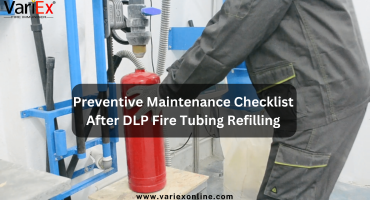 Read more +11 July 2025 in Fire Suppression
Read more +11 July 2025 in Fire Suppression

